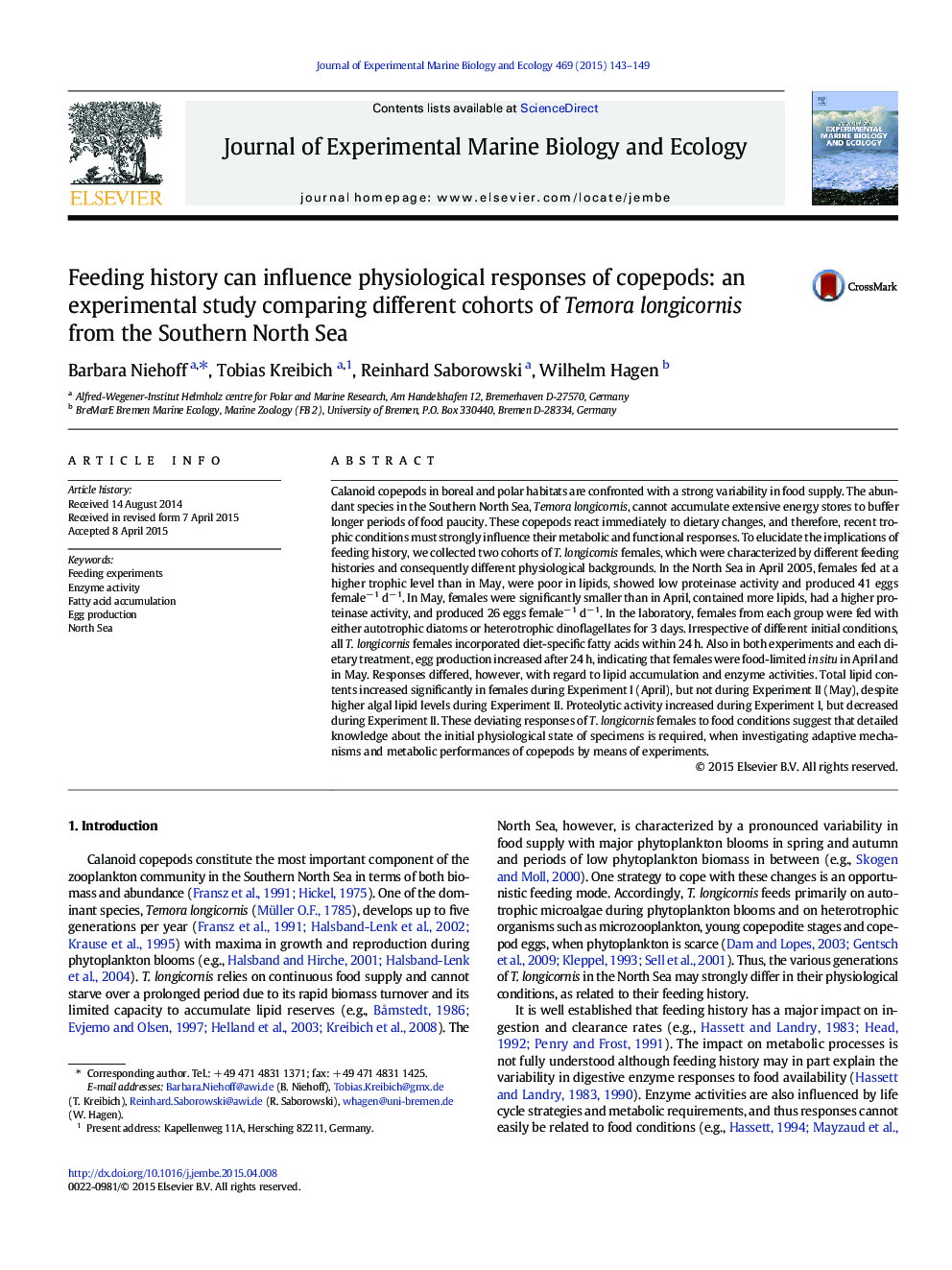| کد مقاله | کد نشریه | سال انتشار | مقاله انگلیسی | نسخه تمام متن |
|---|---|---|---|---|
| 4395429 | 1618406 | 2015 | 7 صفحه PDF | دانلود رایگان |

• We sampled two cohorts of Temora longicornis in April and May in the North Sea.
• For 3 days, the females were fed with autotrophic and heterotrophic algae.
• All females incorporated diet-specific fatty acids and egg production increased.
• Proteinase activity and lipid accumulation differed between the two cohorts.
• Experiments on performance require knowledge of the initial physiological status.
Calanoid copepods in boreal and polar habitats are confronted with a strong variability in food supply. The abundant species in the Southern North Sea, Temora longicornis, cannot accumulate extensive energy stores to buffer longer periods of food paucity. These copepods react immediately to dietary changes, and therefore, recent trophic conditions must strongly influence their metabolic and functional responses. To elucidate the implications of feeding history, we collected two cohorts of T. longicornis females, which were characterized by different feeding histories and consequently different physiological backgrounds. In the North Sea in April 2005, females fed at a higher trophic level than in May, were poor in lipids, showed low proteinase activity and produced 41 eggs female− 1 d− 1. In May, females were significantly smaller than in April, contained more lipids, had a higher proteinase activity, and produced 26 eggs female− 1 d− 1. In the laboratory, females from each group were fed with either autotrophic diatoms or heterotrophic dinoflagellates for 3 days. Irrespective of different initial conditions, all T. longicornis females incorporated diet-specific fatty acids within 24 h. Also in both experiments and each dietary treatment, egg production increased after 24 h, indicating that females were food-limited in situ in April and in May. Responses differed, however, with regard to lipid accumulation and enzyme activities. Total lipid contents increased significantly in females during Experiment I (April), but not during Experiment II (May), despite higher algal lipid levels during Experiment II. Proteolytic activity increased during Experiment I, but decreased during Experiment II. These deviating responses of T. longicornis females to food conditions suggest that detailed knowledge about the initial physiological state of specimens is required, when investigating adaptive mechanisms and metabolic performances of copepods by means of experiments.
Journal: Journal of Experimental Marine Biology and Ecology - Volume 469, August 2015, Pages 143–149